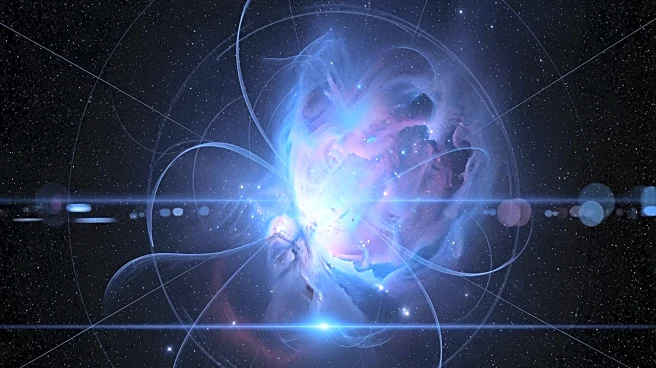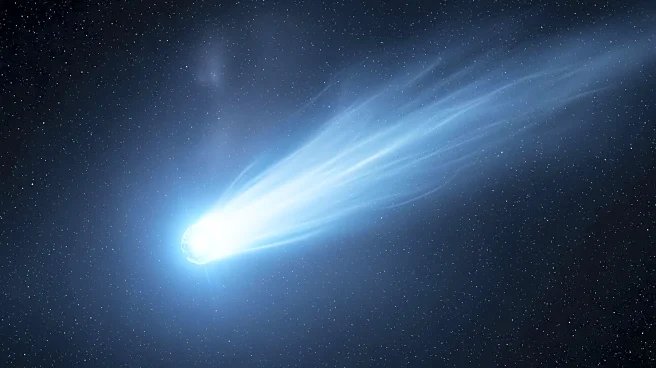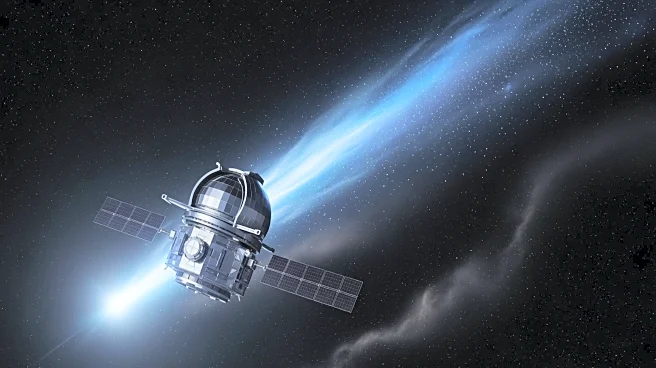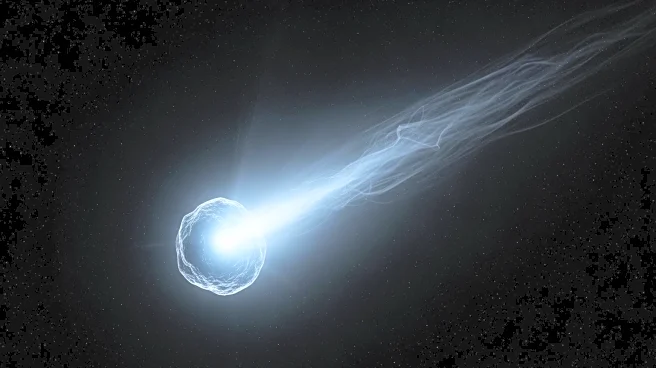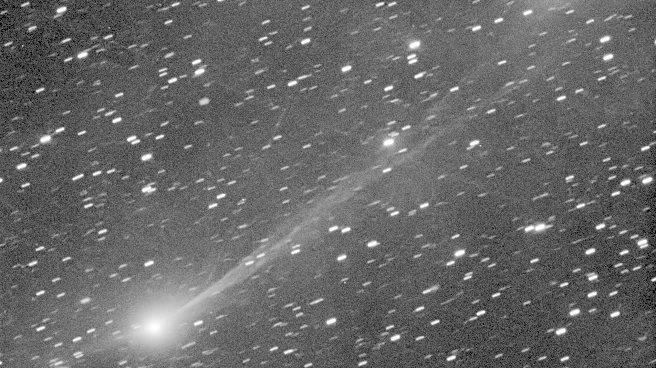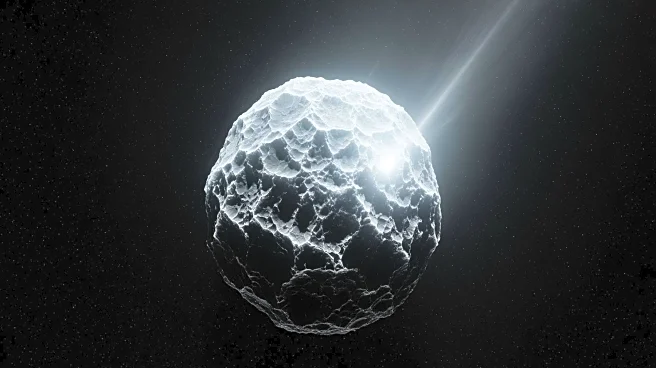What's Happening?
Astronomers have made significant progress in understanding the physics behind 'radio relics,' ghostly arcs of diffuse radio emissions found in galaxy clusters. These relics are formed by shock waves during
galaxy cluster mergers, which accelerate electrons to near-light speed. Observations from NASA's Chandra X-ray Observatory and other telescopes have revealed magnetic fields and shock wave strengths that were previously difficult to explain. Researchers at the Leibniz Institute for Astrophysics Potsdam have used high-resolution simulations to trace the formation and evolution of radio relics, successfully reproducing the puzzling behaviors seen in real observations.
Why It's Important?
The study of radio relics provides valuable insights into the dynamics of galaxy clusters and the processes that govern cosmic phenomena. By resolving longstanding puzzles about the behavior of these relics, astronomers can refine models of galaxy cluster mergers and improve our understanding of the universe's largest structures. The research highlights the importance of multi-scale simulations in capturing complex astrophysical processes and underscores the role of advanced technology in advancing space science. These findings contribute to broader efforts to map the universe and explore the fundamental forces shaping cosmic evolution.
What's Next?
The success of the simulations motivates further research into radio relics and other cosmic phenomena. Astronomers may use the findings to explore additional mysteries surrounding galaxy clusters and refine models of their behavior. Future studies may focus on identifying new relics and analyzing their properties to enhance our understanding of cosmic dynamics. The ongoing exploration of radio relics will contribute to the broader scientific endeavor to map the universe and uncover its secrets, with researchers continuing to leverage advanced technology and simulations to push the boundaries of space science.


